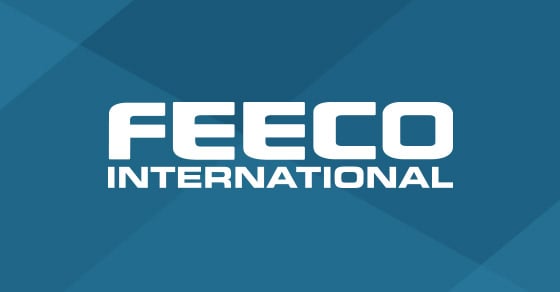The fuel source for operating a rotary dryer or rotary kiln can vary based on location, availability, and cost. But as a leader in thermal processing technology, FEECO can cater to a wide variety of fuel types, making sure our customers can get exactly what they need, no matter their fuel source. This allows us to be flexible to the availability and cost of fuel sources throughout the world.
What types of fuel sources can FEECO dryers and kilns work with?
FEECO can work with countless fuel sources, whether liquid, gas, or electric (kilns only). Some of the most common include:
Natural Gas/Propane
Natural gas or propane is often the top choice of fuel for operating a rotary dryer or kiln, because in the developed world, it is typically the most available. We can also cater to a variety of synthetic gas (Syngas), such as producer gas, or process gas, such as in the case of using Syngas produced in the torrefaction process. Natural gas can be used in both rotary dryers and rotary kilns.
Fuel Oil (Diesel, #6, etc.)
The next most common type is fuel oil. Much like natural gas, this fuel type can also be used in both rotary dryers and kilns. Though the system for using a liquid fuel oil is much more complex than that of a gas system, once the initial design is established, the fuel oil system works similarly to a gas system. Fuel oil is often the choice when working in a remote location, as natural gas pipelines are typically restricted to populated areas and developed countries. Fuel Oil is not typically used however, when product color characteristics are strict, because fuel oil can produce soot. This soot can discolor the end product. However, when product characteristics are not as important, fuel oil is a nice alternative to natural gas.
Electricity
In the case of indirect rotary kilns, electricity is also an option. This approach uses heating coils or rods next to the shell of the rotary kiln to radiate heat through the shell. The major advantage to using electricity for an indirect fired rotary kiln, is that no emissions or exhaust gases are produced, meaning no gas treatment or exhaust system is required. However, the major disadvantage to using electricity as a heat source is that it can be expensive. In this case, the choice typically comes down to the cost of natural gas vs. electricity.
Alternative fuel sources
Waste heat
FEECO can also provide the technology to utilize waste heat from an already existing process. However, waste heat is not typically used as the sole fuel source for an operation; much like a generator for a house, waste heat is often used as a supplemental form of energy to natural gas or fuel oil. Utilizing waste heat as the sole fuel source is not very dependable, because if the plant providing the waste heat goes down, so does the operation running off of the waste heat.
Biogas
FEECO can also work with biogas (e.g. from anaerobic digesters). Similar to waste heat, this operation should also be used as a supplemental form of energy, because of its fluctuating availability.
Utilizing Dual Fuel Burners
FEECO also offers the option to use a dual fuel burner, or one that can handle both natural gas/propane and fuel oil. Having the option to switch from one fuel to the other provides flexibility for fluctuating price or availability. A dual fuel burner is also ideal in situations where a fuel source is not currently available, but will be in the future. This is typical in developing countries, where natural gas is not yet available in an area, but will be in the future.
FEECO’s ability to work with a variety of fuel sources for kilns and dryers assures that customers are not restricted in their capabilities because of their available fuel sources or costs. For more information on our rotary dryers or kilns, contact us today!



